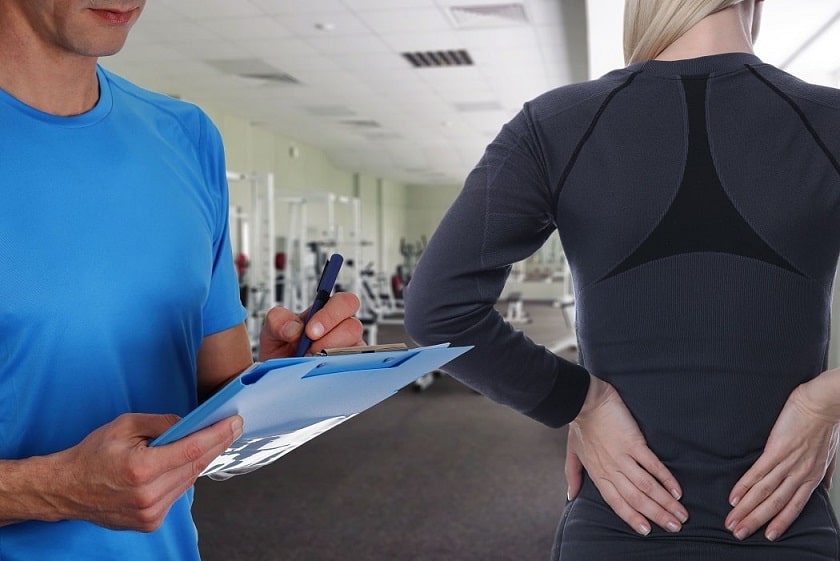“I must be right. Never an aspirin. Never injured a day in my life. The whole country, the whole world, should be doing my exercises. They’d be happier.”
Joseph Hubertus Pilates,
in 1965, aged 86
Cindy, 30, is getting many compliments from her family, friends, and colleagues that she looks fabulous.
She has achieved a lean abdomen and her legs are also toned.
She has a great improvement in her posture too.
She used to complain a lot about her achy neck as well as backache.
Now she is forgetting all those pains.
The secret is that Cindy has been practicing Pilates for the last three months with the guidance of an elite personal trainer for Pilates in London.
You too can get amazing benefits from Pilates like Cindy.
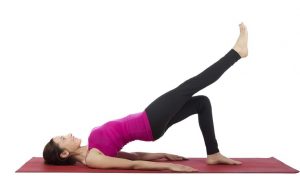
Pilates exercises, as a whole, develop strong abdominal, back, butt, and deep-postural muscles.
These exercises focus on the muscles that support the skeletal system and act as the “powerhouse” of the body. (1)
The term Powerhouse, coined by Joseph H. Pilates refers to the core of our body.
Joseph H. Pilates, the founder of Pilates Exercises quoted…
“In 10 sessions you’ll feel the difference, in 20 sessions you’ll see a difference, and in 30 sessions you’ll have a whole new body”. (2)
Anatomically, the core comprises of:
- The abdominal muscles
- Buttock Muscles
- Back Muscles
- Inner thigh Muscles
These muscles mentioned above are the main stabilising muscles of the body and are very important for preventing injury to the back. (3)
Persons who are suffering with back pain might ask themselves a question that if a personal Pilates trainer near me is an option he/she can consider to manage his/her stubborn back pain?
The answer to this question is YES.
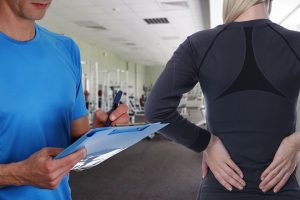
Studies after studies have shown astonishing results of Pilates training in people suffering with back pain and I myself have seen that all clients get better who took one to one Pilates for back pain near me.
Exercising Pilates with an injured body part can be very challenging.
To reach your goals of injury replenishment, you ought to a customised Pilate’s programme.
- Do you want to achieve a lean abdomen and toned legs like Cindy?
- Do you want to get rid of your neck and back pain?
You can achieve these goals by undergoing Pilates training from a 2nd generation qualified Pilates personal trainer.
Book your FREE ONLINE CONSULTATION now to clear your queries regarding neck pain and lower back pain and find out how 121 customised Pilates programme will help you.
WHY OUR POWERHOUSE NEEDS ATTENTION?
- The powerhouse muscles protect your back from potential injury, and if you already have a weak or problematic back, then strengthening the powerhouse will likely alleviate your problems.
- Working from the center of the body when doing any movement takes the load off of the joints and the spine and helps your body work more efficiently.
A strong powerhouse is a sexy thing.
Who does not enjoy a toned belly, back, and inner thighs?
Generally, the Pilates Exercises are an arrangement of activities focused on improving muscle quality and control of:
- The abs (center soundness),
- Stabilisers of the pelvis,
- Hips,
- Knee,
- Shoulders,
- Neck
If your core is weak and there is any imbalance to these muscles you are likely to get:
- An increased extent of back injuries,
- Pelvic unsteadiness
- Week Pelvic Floor,
- Osteoarthritis
- Shoulder impingements (4)
If you want to strengthen your core muscles and reduce the risk of above-mentioned problems an assessment based (evidence based) customised Pilates programme will help you.
The Pilates Exercises mean to improve the control and capacity of the major balancing muscles, which produces sleeker, even, and remarkably conditioned muscles.
By improving general synchronisation of the joints of the body, Pilates Method of Exercise is phenomenal at diminishing over joint burden and either forestalling injury or regularly limiting injuries caused by joint muscle imbalance.
If you have got a powerful core, most of the time you can keep such ailments at bay.
So, if you’re looking for improving your muscles tone and reducing the risk of injury, you’re at the right place.
Book now a FREE ONLINE CONSULTATION with Jazz Alessi, a 2nd generation Pilates trainer and watch your posture, core, confidence levels and body transform.
Joseph Pilates called it “Contrology.”
In his book “Return to Life Through Contrology”, he defined his work as a way to completely and thoroughly unify the body, mind, and spirit.
His principles, which we now call the principles of Pilates, are the foundation for his approach to physical fitness. (6)
While the principles may sound abstract, their integration, according to Pilates, helps achieve balance, grace, and flow.
Let us have a look over the astounding principles of the Pilates method of body transformation. (2, 5)
- Centering
Pilates called the center of our torso as the “powerhouse,” from which all energy for exercise is derived.
During your Pilates workout, you should consciously bring your focus to the center of your body.
As you focus on core, this Pilates principle suggests you will bring calmness to both your body and your spirit.
Control derives from the initial name itself “Contrology”.
Pilates’ method is based on mindfulness, including proper, safe, and complete muscle control.
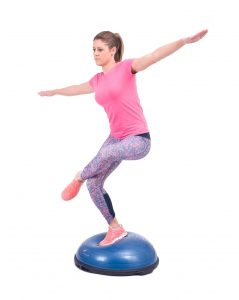
With proper control, you utilised the exact and correct form, leaving no part of your body unattended. (1, 2,6)
2. Concentration
Concentration promotes the mind-body connection.
As you focus and become mindful of each body movement, Pilates states that you will receive optimum physical value from each movement as well as enhance your body awareness. (1,2,6)
3. Precision
According to Pilates’ precision principle, executing one exercise with deliberate exactitude is more important than completing more repetitions with slow and nice form.
For this reason, good Pilate’s instructors provide detailed instructions to their students on all Pilates movements. (1, 2,6)
4. Breathing
Pilates focuses on correct diaphragmatic breathing.
Diaphragmatic breathing involves contraction of the diaphragm, expansion of the belly, and deepening of inhalation and exhalation, which consequently decreases the respiration frequency and maximises the number of blood gases. (7)
Pilates recommended visualising the lungs as bellows as you bring air into the fullest and release it in the same manner.
He proposed that breathing is the integral part of the exercise, and even if one follows no other recommendation, learning to breathe correctly is the most important thing. (1, 2,6)
5. Alignment
From head to toes, the Pilates method stresses good posture and awareness of the placement of all parts of your body.
During your Pilates workout, it is important to be aware of the position of your head, neck, spine, and pelvis.
A correct alignment will help you achieve proper breathing and technique.
Pilates exercises emphasise the neutral alignment of the pelvis, scapulae, and spine.
The joints are always stacked: shoulders over hips, hips over knees, and knees over ankles.
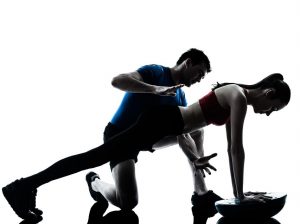
The pelvis is leveled, and the lumbar and thoracic curves are neutralised.
Many Pilates exercises are nearly impossible to perform without this alignment. (1,2,6)
- Flow
Pilates routines are completed through a gentle flow.
Grace, ease, and flowing manner are the intention Joseph Pilates applied to all exercises.
Continuous, smooth, and elegant movement as you transit from one pose to another will bring strength and stamina according to this principle. (1,2,6)
- Integration
Breath, control, mindfulness, centering, alignment, and precision unite as the many groups of muscles work together to support and govern movement.
Practicing each of the above principles achieves Pilates’ goal of an integrated mind-body workout. (1, 2, 6)
Expert Tip
A number of Pilates trainers near me recommend several tips for their clients but they are explained in a complex way (using lots of medical terminologies) and many times clients are unable to understand it.
- Here is a simple tip for all of you that you can easily apply to yourself.
Lie on your stomach and squeeze your legs together, imagine pulling your belly up off the mat so that you could slide a piece of paper underneath your navel.
Then tuck your pelvis under by pressing your pubic bone into the mat and complete this movement by squeezing the lower butt muscles.
The engagement of these three muscle groups — the abs, the butt, and the inner thigh — means you’re working the powerhouse.
- If you were to rise into a cobra or back extension (other Pilates movements) with your upper body, you would try to use this powerhouse to resist the swaying and compression in your low back. (8)
One to one Pilates is considered appropriate for all ages and fitness status and has been used in multiple conditions:
- Age-related disabilities,
- Arthritis
- Lower back pain,
- Cervical back injuries
- Neck pain
- Rheumatic diseases cystic fibrosis,
- Cerebral palsy,
- Stroke,
- Pregnancy,
- Breast cancer,
- Cardiovascular disorders
- Are you suffering from any of the above-mentioned conditions?
- Do you wish to get better without risking an injury?
You can book you FREE ONLINE CONSULTATION now with Jazz Alessi, an elite personal trainer in London specialised in Pilates training.
Pilates training referred to as core strengthening, focuses on back extensors and the Transverse Abdominis muscle.
Pilates is quite popular among women and it has a positive effect on their body mass, waist circumference, and body composition.
Pilates uses a combination of approximately 50 simple, repetitive exercises to create muscular exertion.
Pilates for back pain also involves exercises that focus on core muscles activation.
Long term fans of the Pilates method of exercise show how these exercises can be adapted to provide either gentle strength training for rehabilitation or a strenuous workout vigorous enough to challenge skilled athletes. (1)
THERE ARE TWO DIFFERENT KINDS OF PILATES CLASSES: MAT CLASSES AND REFORMER CLASSES.
You will be enjoying a class either on a mat, which is thicker than your standard yoga mat, to cushion pressure points, or a machine called a reformer, which has a sliding platform complete with a stationary foot bar, springs, and pulleys that provide resistance.
Both options focus on the concept of control rather than cranking out endless reps or muscle exhaustion.
In Pilates, your muscles are working to lift against gravity and (in the case of the reformer) the resistance of the springs or bands, with the ultimate goal of strengthening and isolating the right muscles.
Your goal should be to take your time with the exercises, focus on the task, and connect to your breath.
The reformer experience could be very challenging indeed whilst for some clients is maybe the most fun you will have in a Pilate’s class.
This machine gives you added resistance and a sliding surface that challenges your workout.
It often feels like you are flying or gliding.
Practicing Pilates will gift you:
- A super-strong core
- Improved flexibility
- Improved balance
- Alleviation of aches and pains, particularly back pain
- Weight loss
- Rehabilitate your knees
- Longer and leaner muscles
- Improved posture
- Improved stabilisation of the spine and pelvis
- Rehabilitation of injuries
- Prevention of future injuries
- Increased lung capacity and circulation due to the practice of deep, mindful, lateral breathing techniques
- Do any of the above-mentioned goals resonate with you and live in greater London?
- Why not turn your goal into reality under the supervision of experienced Pilates personal trainer in London?
Book your FREE ONLINE CONSULTATION now with Jazz Alessi, a 2nd generation Pilates trainer.
Four Pilates Exercises That Sculpt Your Abs
ROLL UP
How to do it?
- Lie face up with arms extended overhead, palms facing the ceiling.
- Extend legs with heels together and toes turned out.
- Exhale as you raise your arms over your chest for this Pilates abs exercise.
- Pull your abs in, and roll up to a seated position.
- Continue until you are bent over your legs reaching your hands forward.
- Inhale, then exhale as you reverse the sequence to return to the starting position.
Sets: 1
Number of repetitions: 5
ROLLOVER
How to do it?
- Lie faceup with knees bent over your hips, heels together and toes pointed.
- Lift your shoulders and extend your arms on either side of your legs, palms.
- Inhale as you prepare to complete this class Pilates abs exercise.
- Exhale as you extend your legs in front of you and bring your arms overhead, palms facing legs.
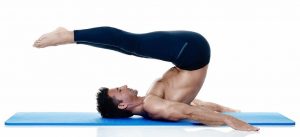
5. Return to starting position.
Sets: 1
Number of repetitions: 15
PILATES HUNDRED
How to do it?
- Lie with your back to the floor.
- Lift your legs to a 65-degree angle.
- Point your toes and squeeze your heels together.
- Raise your shoulders off the floor and crunch your upper abs (you don’t have to do a V-sit variation with your back off the floor, as pictured above).
- Bring your hands in front of you, right by your sides.
- As you oscillate your arms up and down, inhale through your nose for five pumps and exhale for five pumps.
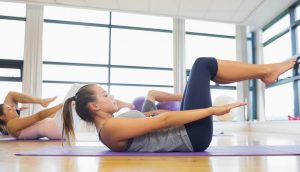
- The speed of your arms is dictated by your breath, so you can choose to go faster or slower.
- Keep pumping and holding this position for 10 complete breaths (or 100 pumps).
Sets: 1
Number of repetitions: 10
SAW POSE
How to do it?
- Sit tall, on your butt with your legs wider than your hips.
- Reach your arms out to the side.
- Inhale and bring your belly button in.
- Twist to the left.
- Exhale and reach as far as you can toward the left foot.
- Have the pinky finger of the right hand outside of your left foot.
- Rotate your back arm until your thumb points towards the floor.
- Continue to reach forward for one breath. Then return and repeat on the other side.
Sets: 1
Number of repetitions: 15
When people think of Pilates, it is most likely because they have seen a poster at the gym, heard a friend complaining about their sore Pilates abs, or have read about celebrities incorporating it into their lives.
The craze is true though. (2) An amazing Pilates coach can make you experience wonders.
If you’re looking for Pilates for back pain London based or anywhere else in the world, you should immediately look for best Pilates trainers near you and get yourself enrolled.
Your body is the most precious thing you have and you must take care of it.
Added Mental Benefits of Pilates
It is obvious that there are physical benefits to practicing Pilates such as back pain relief but there are also several benefits to the mind and one’s mental health.
Because of those confounding principles (centering, concentration, control, precision, breath, integration, and flow), as defined above, it is easy to understand how Pilates can benefit more than just the physical body.
Some of the mental benefits of Pilates include:
- Improves energy
- Awareness of breath
- Self-awareness
- Increased self-control
- Keeping stress and anxiety at bay
- Provides tools for stress management
- Increases focus and concentration outside of the practice
- Promotes building healthy lifestyle habits while getting rid of poor and unhealthy lifestyle choices
- Builds confidence
- The decrease in fatigue (9)
Who is Jazz Alessi?
Jazz Alessi is an elite personal trainer in London who is specialised in Pilates personal training with more than 20 years of practical teaching experience.
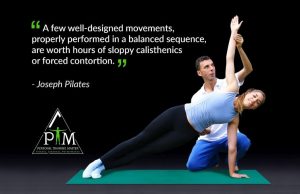
He is a qualified 2nd generation Pilates teacher in London and can help you in achieving your desired goals.
- Looking to get rid of back pain?
Following your comprehensive fitness, posture and movement assessment Jazz will design a customised Pilates training programme for you.
- Want to see your 6 pack, correct posture, a slim and smart body?
Jazz will not only be your teacher in Pilates but he will also your nutritionist.
Don’t forget that he is an elite personal trainer who has trained a number of Olympic athletes.
- And what if you have injured some part of your body and looking for injury rehabilitation?
Don’t you worry!
Jazz Alessi is an injury rehabilitation expert too who has been providing his services in injury rehabilitation for over 15 years.
Want to know more about Jazz Alessi and the services he is offering?
Book your FREE ONLINE CONSULTATION now.
REFERENCES:
- Muscolino, J., & Cipriani, S. (2004). Pilates and the “powerhouse”—II. Journal Of Bodywork And Movement Therapies, 8(2), 122-130. https://doi.org/10.1016/s1360-8592(03)00058-5
- Pilates: How does it work and who needs it?(2011, April). PubMed Central (PMC). https://www.ncbi.nlm.nih.gov/pmc/articles/PMC3666467/
- Lee, C., Hyun, J., & Kim, S. (2014). Influence of Pilates Mat and Apparatus Exercises on Pain and Balance of Businesswomen with Chronic Low Back Pain. Journal Of Physical Therapy Science, 26(4), 475-477. https://doi.org/10.1589/jpts.26.475
- Core stability training for injury prevention. (n.d.). PubMed Central (PMC). https://www.ncbi.nlm.nih.gov/pmc/articles/PMC3806175/
- Defining Pilates exercise: A systematic review. (n.d.). PubMed. Pilates and the “powerhouse”—I. (n.d.). ResearchGate. https://www.researchgate.net/publication/244877817_Pilates_and_the_powerhouse-I
- The effect of diaphragmatic breathing on attention, negative affect, and stress in healthy adults. (n.d.). PubMed Central (PMC). https://www.ncbi.nlm.nih.gov/pmc/articles/PMC5455070/#B43
- DORADO, C., CALBET, J. A., LOPEZ-GORDILLO, A., ALAYON, S., & SANCHIS-MOYSI, J. (2012). Marked effects of Pilates on the abdominal muscles. Medicine & Science in Sports & Exercise, 44(8), 1589-1594. https://doi.org/10.1249/mss.0b013e31824fb6ae
- Pilates, mindfulness, and somatic education. (1, December). PubMed Central (PMC). https://www.ncbi.nlm.nih.gov/pmc/articles/PMC4198945/



